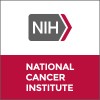
Monoclonal Antibody 3F8 and Sargramostim in Treating Patients With Neuroblastoma
NeuroblastomaRATIONALE: Monoclonal antibodies, such as monoclonal antibody 3F8, can locate tumor cells and either kill them or deliver tumor-killing substances to them without harming normal cells. Colony-stimulating factors, such as sargramostim, may increase the number of immune cells found in bone marrow or peripheral blood. Combining monoclonal antibody 3F8 with sargramostim may cause a stronger immune response and kill more tumor cells. PURPOSE: Phase II trial to study the effectiveness of combining monoclonal antibody 3F8 with sargramostim in treating patients who have neuroblastoma.

Talabostat Combined With Temozolomide or Carboplatin in Treating Young Patients With Relapsed or...
Brain and Central Nervous System TumorsChildhood Germ Cell Tumor7 moreRATIONALE: Talabostat may stop the growth of tumor cells by blocking some of the enzymes needed for cell growth. Drugs used in chemotherapy, such as temozolomide and carboplatin, work in different ways to stop the growth of tumor cells, either by killing the cells or by stopping them from dividing. Giving talabostat together with temozolomide or carboplatin may kill more tumor cells. PURPOSE: This phase I trial is studying the side effects and best dose of talabostat when given together with temozolomide or carboplatin in treating young patients with relapsed or refractory brain tumors or other solid tumors.

N2004-04: Fenretinide LXS in Treating Patients With Recurrent, Refractory, or Persistent Neuroblastoma...
NeuroblastomaRATIONALE: Drugs used in chemotherapy, such as fenretinide LXS, work in different ways to stop the growth of tumor cells, either by killing the cells or by stopping them from dividing. PURPOSE: This phase I trial is studying the side effects and best dose of fenretinide LXS in treating patients with recurrent, refractory, or persistent neuroblastoma.

Comparing Two Different Myeloablation Therapies in Treating Young Patients Who Are Undergoing a...
Localized Resectable NeuroblastomaLocalized Unresectable Neuroblastoma4 moreThis randomized phase III trial compares two different high-dose chemotherapy regimens followed by a stem cell transplant in treating younger patients with high-risk neuroblastoma. Drugs used in chemotherapy work in different ways to stop the growth of tumor cells, either by killing the cells or by stopping them from dividing. Giving combination chemotherapy before surgery may make the tumor smaller and reduce the amount of normal tissue that needs to be removed. Giving these treatments before a peripheral blood stem cell transplant helps kill any tumor cells that are in the body and helps make room in the patient?s bone marrow for new blood-forming cells (stem cells) to grow. After treatment, stem cells are collected from the patient's blood and stored. High-dose chemotherapy and radiation therapy is then given to prepare the bone marrow for the stem cell transplant. The stem cells are then returned to the patient to replace the blood-forming cells that were destroyed by the high- chemotherapy. It is not yet known which regimen of high-dose chemotherapy is more effective for patients with high-risk neuroblastoma undergoing a peripheral blood stem cell transplant.

Temozolomide in Treating Young Patients With High-Risk Relapsed or Refractory Neuroblastoma
NeuroblastomaRATIONALE: Drugs used in chemotherapy, such as temozolomide, work in different ways to stop the growth of tumor cells, either by killing the cells or by stopping them from dividing. PURPOSE: This phase II trial is studying how well temozolomide works in treating patients with high-risk relapsed or refractory neuroblastoma.

Combination Chemotherapy in Treating Infants With Newly Diagnosed Neuroblastoma
NeuroblastomaRATIONALE: Drugs used in chemotherapy use different ways to stop tumor cells from dividing so they stop growing or die. Combining more than one drug may kill more tumor cells. PURPOSE: Phase II trial to study the effectiveness of different combination chemotherapy regimens in treating infants who have newly diagnosed neuroblastoma.

Beta-Glucan and Monoclonal Antibody in Treating Patients With Metastatic Neuroblastoma
NeuroblastomaRATIONALE: Biological therapies such as beta-glucan use different ways to stimulate the immune system and stop cancer cells from growing. Monoclonal antibodies can locate tumor cells and either kill them or deliver tumor-killing substances to them without harming normal cells. Combining beta-glucan and monoclonal antibody may kill more tumor cells. PURPOSE: Phase I trial to study the effectiveness of combining beta-glucan and monoclonal antibody in treating patients who have metastatic neuroblastoma.

Ixabepilone in Treating Young Patients With Solid Tumors or Leukemia That Haven't Responded to Therapy...
Brain and Central Nervous System TumorsChildhood Germ Cell Tumor9 moreRATIONALE: Drugs used in chemotherapy use different ways to stop tumor cells from dividing so they stop growing or die. PURPOSE: This phase I trial is studying the side effects and best dose of ixabepilone in treating young patients with relapsed or refractory solid tumors or leukemia.

Imatinib Mesylate in Treating Patients With Relapsed or Refractory Solid Tumors of Childhood
Childhood Desmoplastic Small Round Cell TumorChildhood Synovial Sarcoma6 morePhase II trial to study the effectiveness of imatinib mesylate in treating patients who have relapsed or refractory solid tumors of childhood. Imatinib mesylate may stop the growth of tumor cells by blocking the enzymes necessary for their growth.

Fenretinide in Treating Children With Solid Tumors
NeuroblastomaUnspecified Childhood Solid Tumor1 morePhase I trial to study the effectiveness of fenretinide in treating children who have solid tumors that have not responded to standard therapy. Drugs used in chemotherapy use different ways to stop tumor cells from dividing so they stop growing or die.
